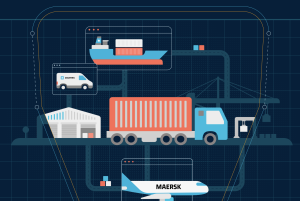 If they are still operating in the same way as they are today, you will probably not be competitive, let alone a significant market participant!
If they are still operating in the same way as they are today, you will probably not be competitive, let alone a significant market participant!
Researchers have proposed seven key strategies for success in the future. Organisations that aspire to be commanding forces in their industries in the next ten years will have to consider all seven. South African based organisations must take note of how this will affect them, Elaine Porteous, Business Development Executive at TechPro Personnel, tells SmartProcurement.
External forces that will affect all businesses
‘Succeeding in a Dynamic World : Supply Management in the Decade Ahead’, compiled by CAPS Research, A.T. Kearney and the Institute of Supply Management (ISM), was conducted across 260 global and US companies which provided some very interesting results.
Managers who were questioned expressed real concern about the effect China, India and other large emerging markets will have on the competitive landscape. The conclusion was drawn that companies that are already mature and are headquartered in the developed western markets will have to take steps to merge and consolidate to ensure they have economies of scale and market power.
Government legislation and regulation will increase, which will require resources to ensure compliance. There will be more rules relating to environmental standards, waste and recycling, sustainability practices, tax issues and carbon emissions. This all comes at a cost and will have an impact on supply strategies. Those companies that effectively manage these challenges will have an added advantage.
Seven key strategies to survive the next decade
1.Category plans must be robust and forward looking
Organisations’ category supply chains will have to become more strategic across the whole enterprise and become more agile across multiple divisions so that the business can quickly reconfigure as conditions change.
Synergies must be identified to reduce costs and eliminate duplication of effort across divisions. An example of this is early collaboration between those involved in product and package design with the procurement and supply chain people to ensure lowest total cost to get to market.
2.Develop value-adding supplier relationships
Supply management in the 21st century requires partnering with the most innovative suppliers to ensure competitiveness. This is not a new concept but is poorly understood and rarely implemented to the benefit of both parties.
The future supply base will include supplier networks to gain better competitive advantage, i.e. alliances between suppliers who would otherwise compete with each other in different circumstances.
Greater emphasis must be place on the requirement that suppliers give continuous feedback and communication. Supply agreements must provide for this and find ways to reward behaviour that creates continuous improvement in goods and services delivery.
3.Multiple supply chains needed to satisfy market segments
Successful supply chain solutions are driven by customer and end user needs and will require flexibility and seamlessness. Products and services must be delivered at the lowest overall cost, which is the key to future revenue and market share growth.
Leading organisations will have a deep knowledge and insight into their customers’ supply chain and will anticipate their needs. They will provide customised solutions using the best technology, strategic thinking and creativity whilst maintaining open lines of communication.
4.Leveraging technology
Technology breakthroughs will cause major changes to how products and services are provided. Although there will be additional costs in hardware, software and resources, the total cost of ownership will be lower.
The use of new offerings to improve internal productivity and external efficiencies will be achieved, however, there are serious challenges around having the capable skills to fully utilise them, particularly in South Africa’s market. Implementation of some technologies will require skills not presently seen in current supply chains.
However, World-Class Procurement practices are only half the challenge – how do South African organisations align these strategies with Government’s transformation targets?
Don’t miss SmartProcurement’s 3rd Annual SmartSourcing Conference, November 10 & 11, at Leriba Lodge in Centurion, which will debate future global trends of Supply Management within the dynamics of local Preferential Procurement.
For further information or registrations, please contact Erieka Santos on 0861 334 326 or email her at admin@smartprocurement.co.za.
Elaine Porteous can be contacted on 011 514 0463 or via email at elaine@tech-pro.co.za.
Part Two of this article will appear in the November newsletter and will detail the next three important strategies relating to collaboration, talent recruitment and retention and how to manage future supply chains.


























